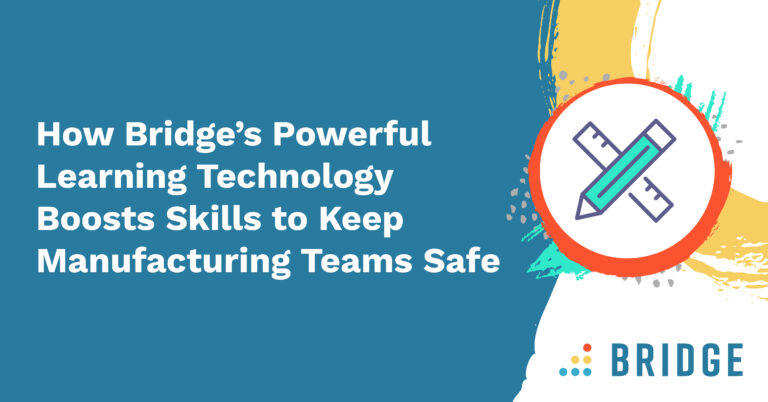No organization needs persuading that communication is a vital part of fostering good employee-manager relationships and improving morale. If you want to feel the benefits of robust communication culture, you’ll obviously need to make sure your people are feeling heard. But is this goal as simple as it seems?
According to research from The Workforce Institute, 83% of employees feel they aren’t heard “fairly or equally,” while 60% believe that their views and opinions are just ignored.
The right tools and techniques can deal with this challenge, allowing employers to foster an ethos of communication built on listening, respect, and mutual understanding. To reach that point, though, it’s worth taking a moment to think about why your people might be feeling out of the loop.
Increasingly Isolated Workforces
It’s no wonder your employees can feel like small or distant voices when, in many cases, they’re literally speaking at a distance! The ongoing shift towards remote working that began in the pandemic magnifies the challenge of making employees feel heard, as many will spend part or all of their time alone.
The Microsoft New Future of Work Report 2022 came to a similar conclusion. The report points out that remote work has plenty of benefits, including great implications for work-life balance and job satisfaction. However, some remote workers can feel “socially isolated” when working from home. This is a potential step backward on the path toward better employee wellbeing, and the problem is rooted in a lack of connection between employees.
The Effects of Isolation on Employee Wellbeing and Productivity
Obviously, a need for better employee wellbeing is already enough of a reason to try and amplify employee voices—but there’s also a strong business case for addressing any concerns over isolation.
According to healthcare provider CIGNA, the decrease in productivity caused by worker stress and loneliness costs US employers $154 billion per year. As such, strengthening the lines of communication between your people isn’t just good for them, but good for your bottom line, too. It’s the ultimate win-win.
Clearly, the changes brought on by the pandemic have catalyzed and thrown light on the issue of employee isolation, with many workers feeling lonely, unheard, and potentially unproductive. So, how can your organization ensure its communication style addresses this problem?
RELATED READING ┃‘How to Boost Employee Workplace Wellbeing’
What Is a Culture of Conversation?
Making your people feel heard clearly takes more than a top-down approach to communication. It’s not about increasing the number of emails sent from your leadership team, or about flagging issues for discussion in the next round of annual reviews. It’s about a continuous, sensitive, and two-way form of communication.
After all, the pandemic didn’t just increase employee isolation—it also brought on a host of stresses and concerns about topics like health and wellbeing. For McKinsey, these concerns require a new kind of communication from business leaders. If you’re going to address “the core human emotions of grief, loss, and anxiety in the workplace”, you’re going to need to take on a sensitive communication style.
This more personal form of communication, which respects the day-to-day concerns of employees and places an emphasis on mutual listening and understanding, is fast becoming a must-have. It’s about shifting from a corporate mode of communication to a more consistently friendly and conversational alternative, which we’re calling a “culture of conversation”. The right tools and processes will allow your organization to make the transition toward a conversational culture through a handful of simple changes.
How to Create a Culture of Conversation?
1) Have One-On-One Meetings
Engaging your people in a culture of conversation has to begin with regular one-on-one meetings between employees and managers. A Deloitte study points out that if employers of the future want to respond to worker needs, they’ll need to initiate “an ongoing conversation with workers.” What better place to start that conversation than in a straightforward one-on-one setting?
If you’re aiming for an ongoing conversation, annual reviews just aren’t going to hit the spot. Instead, you need to ensure your managers are always in a position to provide a consistent time slot for their reports.
It’s worth bearing in mind, though, that not every employee will come to these meetings with a clear idea of how best to use your help. Just because they want to be heard doesn’t mean they can always vocalize their wants and needs.
That’s why it can be helpful to prepare for one-on-one meetings with questions designed to prompt a productive conversation. Some of our favorites include:
- What’s frustrating you right now?
- What are you excited about at the moment?
- What’s the most important thing I can do for you this week?
Asking these questions will allow you to offer specific, actionable support, instill a sense of mutual trust, and put your people in contact with the individuals that can help them out.
FURTHER READING ABOUT ONE-ON-ONES┃‘One-on-One Meetings: How the Personal Touch Improves Workplace Performance’
2) Utilize Interactive Organization Charts
Regular one-on-ones are just the starting point on your organization’s journey toward a full culture of conversation. Your people need to know who to meet and how to get hold of them—whether they’re new hires looking to introduce themselves or veteran employees expanding their skillsets and opening new lines of communication.
The right skill and career development tools will help your organization widen its conversations and make vital new connections among employees who might never have met.
Bridge gives organizations the ability to build and share their org charts cross-functionally. We believe a good org chart offers full visibility of a given organization’s structure, helping employees to feel more connected with their workplace—even from the comfort of home.
Combine this with a strong people search function, which allows your people to learn about their colleagues on a personal and professional level, and you’re left with potentially hundreds of lines of communication—transforming your individual workers into an interconnected whole.
3) Set Clear Goals
It’s one thing to create opportunities for conversation—but you also need to make sure you’re using conversation productively. Your people may have had meaningful, sensitive one-on-ones with their managers, but the productivity benefits of these conversations won’t be felt unless they can be transformed into actionable targets.
In the collaborative, give-and-take spirit of conversation, goals should be chosen by employees under managerial guidance. By allowing employees to set goals that they actively want to pursue, they’ll be motivated to turn action items into reality.
At the same time, managers who can find a way to align those goals with the wider needs of your organization will unlock new levels of productivity. This isn’t just common sense—it’s a position backed by Gartner, who found that “when employee goals are aligned with organizational priorities…employee performance increases by up to 22%.”
Investing in the right tools will allow organizations to find similar ways to measure progress and success for employees looking to turn conversations about their wants and needs into concrete results.
RELATED READING┃‘Get Aligned: 3 Ways to Keep Employees Aligned With Organizational Goals’
4) Survey Your Teams Regularly
Stronger individual connections between workers and their managers and colleagues are absolutely a vital part of your culture of conversation—but for truly organization-wide results, engagement surveys are a must. If your people aren’t being heard, there’s no better way to turn that around than by directly asking for their thoughts and feedback.
Much like one-on-one meetings, engagement surveys work best when they happen fairly often. EY has found that “moving from annual engagement surveys to more regular ‘pulsing’ delivers more valuable insight,” and—of course—insight into how your people think and feel will be a key part of your culture of conversation.
You might consider making your surveys anonymous, allowing your people to speak their minds with total honesty. However, that doesn’t mean individual voices won’t be heard! Bridge’s employee engagement surveys allow administrators to respond to employee remarks and get extra clarity without breaking that all-important anonymity.
How Can Bridge Kickstart Your Culture of Conversation?
Changing the makeup of your organization’s culture is a wide-ranging task, but Bridge’s core features have the breadth and variety to get the job done. Bridge’s Performance Management tool makes it simple to deliver one-on-one conversations that prompt meaningful goal alignments between employees and their companies.
Connect your people with their peers and colleagues through Bridge’s org chart and people search features and discover what motivates them through the career drivers activity. Powerful engagement surveys drive home your employees’ messages, giving voice and expression to their needs while ensuring that listening is embedded in the heart of your organization’s future development.




